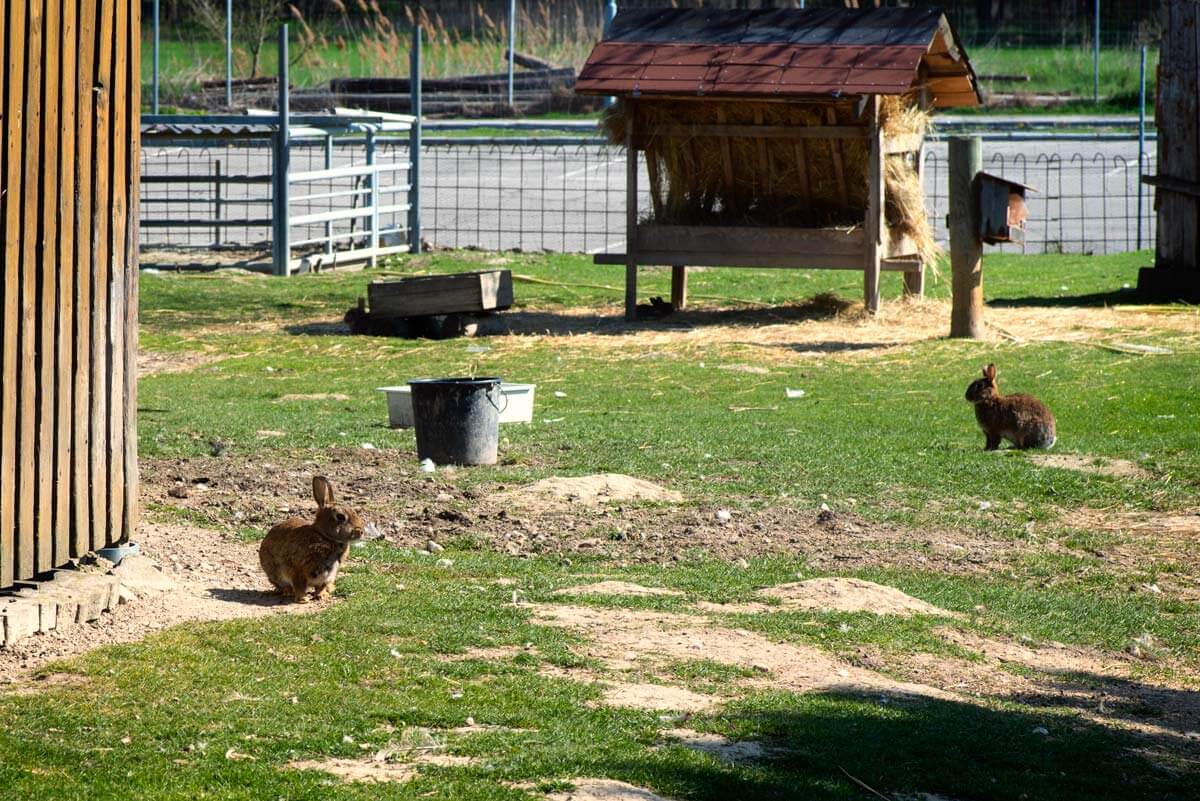If you’ve ever considered raising rabbits for meat, this post is a must-read. We’re discussing everything from meat rabbit breeds, whether raising rabbits for meat is worth it and if it’s profitable, how long it takes to raise rabbits for meat, whether you can raise meat rabbits in your backyard, and so much more!
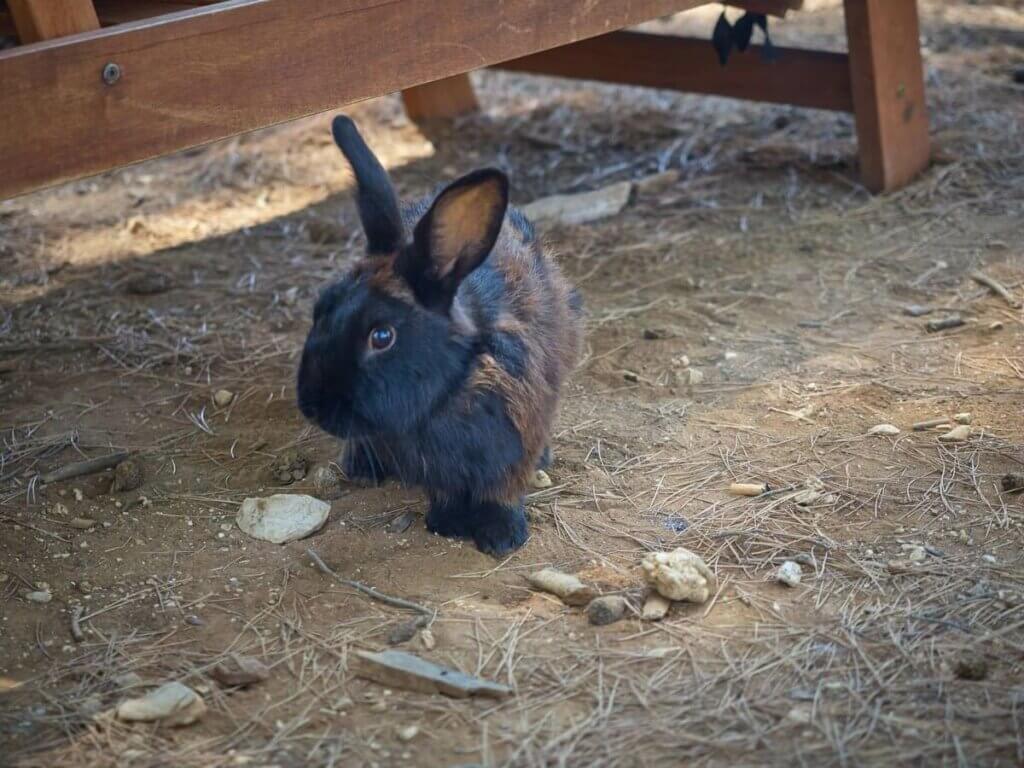
In this podcast (episode #317), I’m talking to Jeremy Chambers who graciously taught me about raising meat rabbits as though I knew nothing (which I didn’t before, now I feel armed with knowledge for raising our own meat rabbits).
Jeremy and his family live on a five-acre homestead in rural Southeast Michigan called Independence Acres. They’ve transformed their homestead, raise and homeschool their three children and have started a YouTube channel dedicated to the homesteading lifestyle that allows them to live self-sufficiently.
Home-Raised Meat Alternative
Even though we raise most of our own meat here on our homestead, I do love that I have the option to order from a company like Butcher Box where I can get high-quality meat shipped and delivered right to my door.
Right now (at the time of this posting) Butcher Box is offering free chicken, burgers, and hot dogs with your first order! If you can’t yet raise all your own meat, Butcher Box is a great solution for maintaining that high-quality meat we all want.
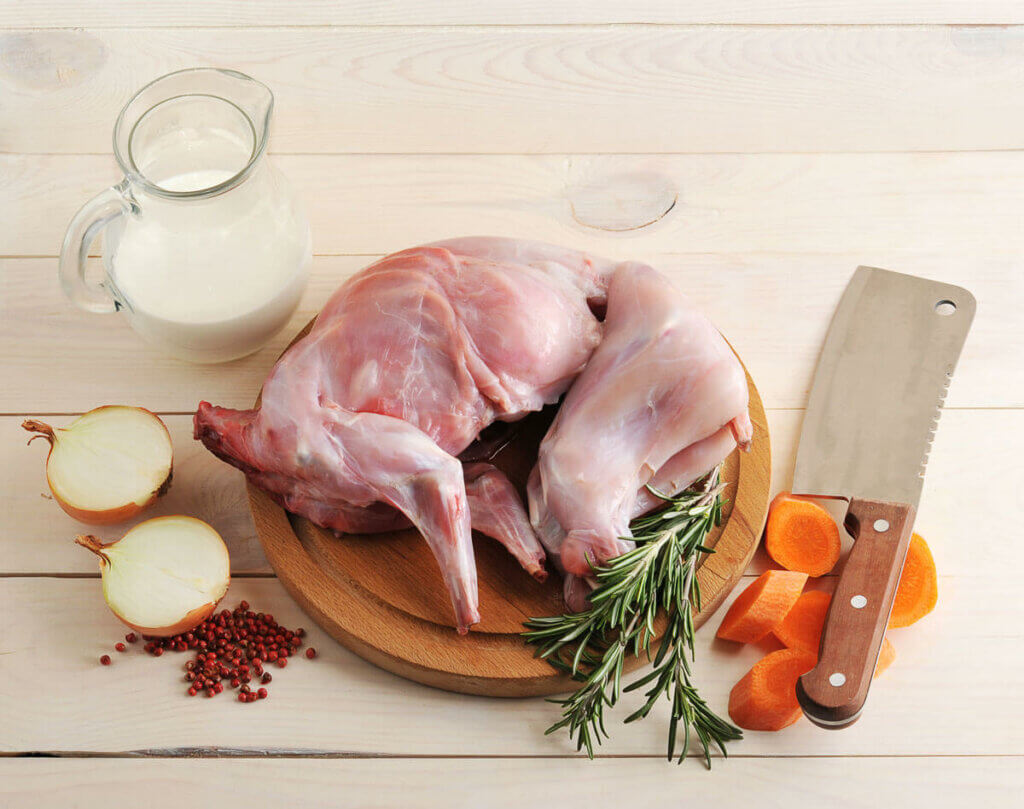
Rabbit Meat
I personally haven’t eaten rabbit meat since I was a little kid. My uncle raised rabbits and I can remember it tasting like chicken.
Jeremy describes the meat as having the flavor of white meat turkey with the texture of white meat pork. It is delicious especially when you learn how to properly cook rabbit.
Rabbit Breeds
Jeremy’s favorite rabbit breed is Californian because they’re the quintessential commercial meat-style rabbit. They also raise American Chinchilla because they add a bit of color and vibrancy. They were actually developed in the United States as a meat rabbit.
When it really comes down to it, all rabbits are meat rabbits. However, some will grow to be much larger in size, while others will have different personalities and care needs.
There’s really no hard line in the sand for which breeds are best for meat rabbits.
Climate
There are breeds that have been developed that are well-suited for warm dry climates. There are also breeds that can handle temperatures from 90 degrees F all the way down to negative degrees with no problems.
The bottom line is that you want to make sure your rabbits are getting good airflow and that have been well acclimated to that climate.
You don’t want to get meat rabbits that will be transported from somewhere that’s much hotter or much colder than your current temperature.
The perfect scenario is to get meat stock from a local source.
Where to Buy Meat Rabbits
In my local area, I haven’t heard of anyone who sells meat rabbits for breeding. Jeremy mentions that those people who breed rabbits to sell aren’t really big on advertising, so taking to Google to find your source may not always work.
The best place to find quality rabbit stock will be at your local 4H fair. If you can buy 2-4 quality meat pens then it’s very likely that you’re going to have quality stock. If you can’t buy any pens at that time, it’s a great place to make some connections with reputable breeders.
The other option is the American Rabbit Breeders Association website.
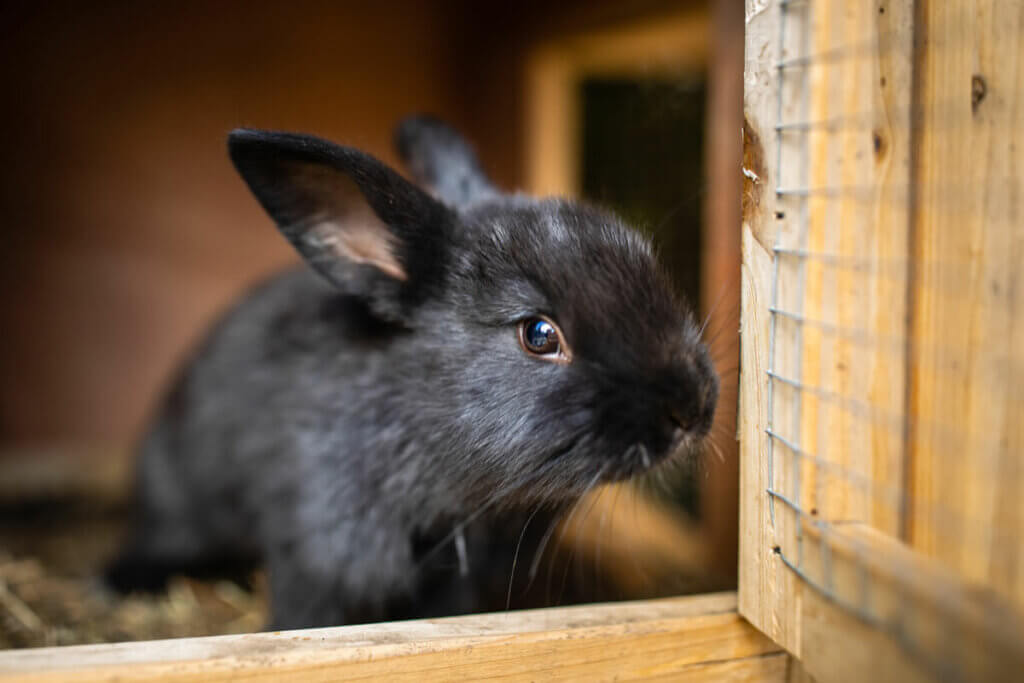
Housing Rabbits
When it comes to housing your rabbits you have two options:
- Hutches or cages
- Colonies and more natural environments
In order to decide which housing will work best for you, you have to consider your climate.
6 square feet per rabbit so they have enough room to move around. They also should have enough space to completely layout and stand up completely on their rear legs without hitting their head on the top of the cage.
This equates to a cage with the dimensions of 24-36 inches wide and deep by about 16 inches high.
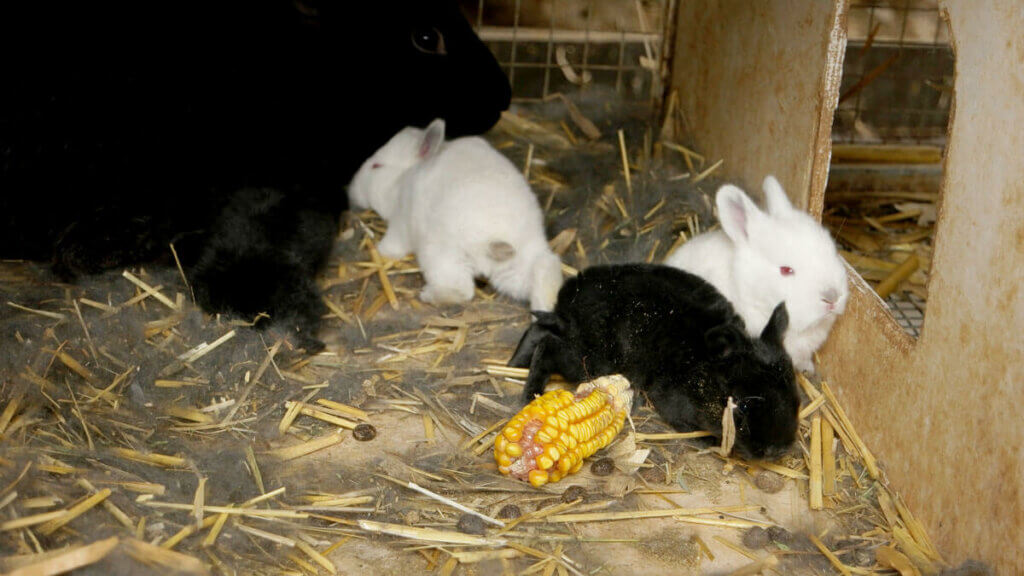
Cages & Hutches
If you live in a very rainy climate, you may have a high parasite load. This would lend best to using hutches or cages to keep your rabbits healthy and safe. (Livestock can expose you to parasites, so it’s important to learn how to get rid of parasites in your body, too.)
You can also easily collect their manure to use in the garden and keep your rabbits safe from predators.
This makes handling, feeding, and caring for the rabbits much easier. For more inspiration on hutch and cage ideas, take to the internet!
Hutches and cages are also great to use when you’re just getting started with rabbits. This gives you time to learn about the breed, your climate, etc.

Colony
This would be where you allow your rabbits to have more room, maybe a dirt floor, and places to tunnel and play. This is great for rabbits to build more muscle in the meat.
If this works for your climate then it’s a fantastic option.
If you must raise your rabbits in hutches or cages, consider having an area where they can hop around from time to time, but not completely live out there where it might be dangerous for them to do so due to parasites.
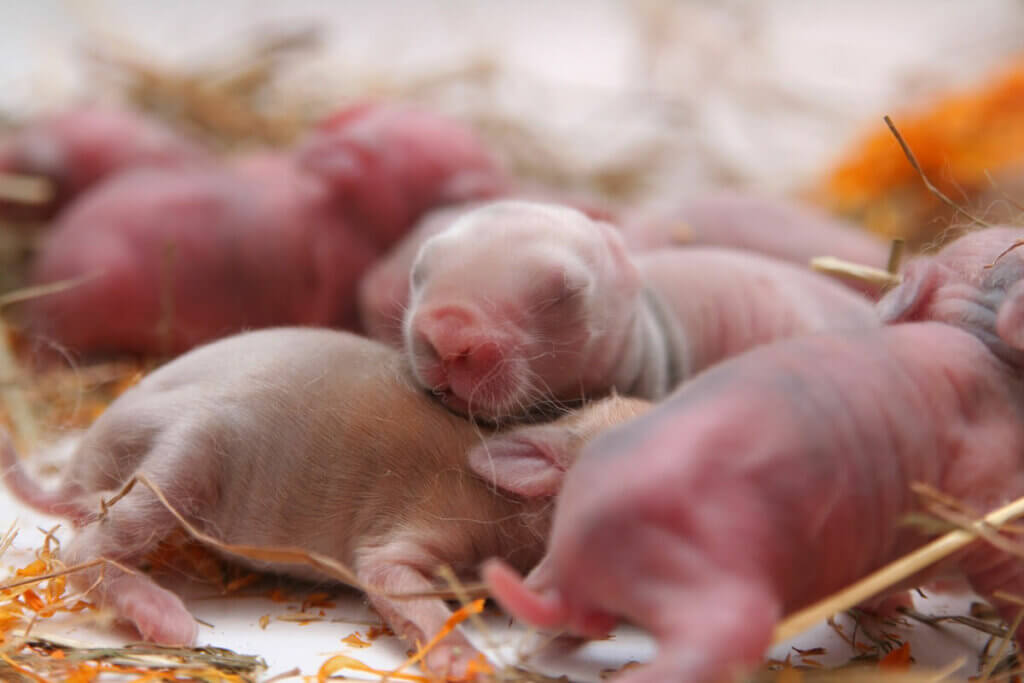
Breeding Rabbits
One buck (male rabbit) can service up to six does (female rabbits) in one day. So you can see how quickly rabbits can multiply!
Jeremy recommends starting with a trio (two does and a buck), and in a 12 month period on a moderate breeding schedule, you could raise from 250-300 lbs of meat.
If you have a good quality stock you could increase this a bit and get upwards of 500 lbs of meat in a year.
Gestational Period for Rabbits
The gestational period for rabbits is roughly 29-32 days. And unlike most other mammals that have an ovulation schedule of every 28 days or 12 months, etc., rabbits ovulate when they’re bred.
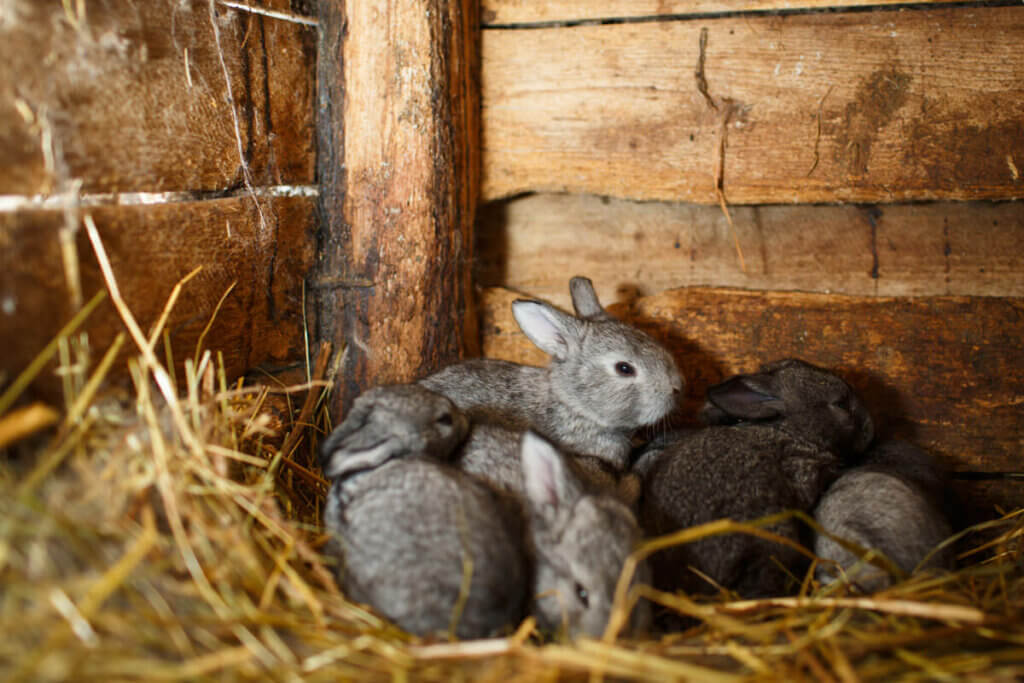
How Often Can You Breed Rabbits
Technically speaking, and you’ll see this in the wild, you can breed your rabbit the day they give birth.
This is not an ideal situation and would be considered a very aggressive schedule, but it can be done.
Ideally, you’d want to give your doe about 4-6 weeks to rest, nurse her litter, and regain some strength for the next round of breeding.
On this schedule you could get about 120 rabbits at about 4 lbs per rabbit for 3 lbs of actual meat, giving you about 360 lbs of rabbit meat per doe.
How Long it Takes To Raise Rabbits for Meat
We generally raise our rabbits to about 12 weeks. This will give you about 3 lbs of meat per rabbit and produces a very delicious quality of meat.
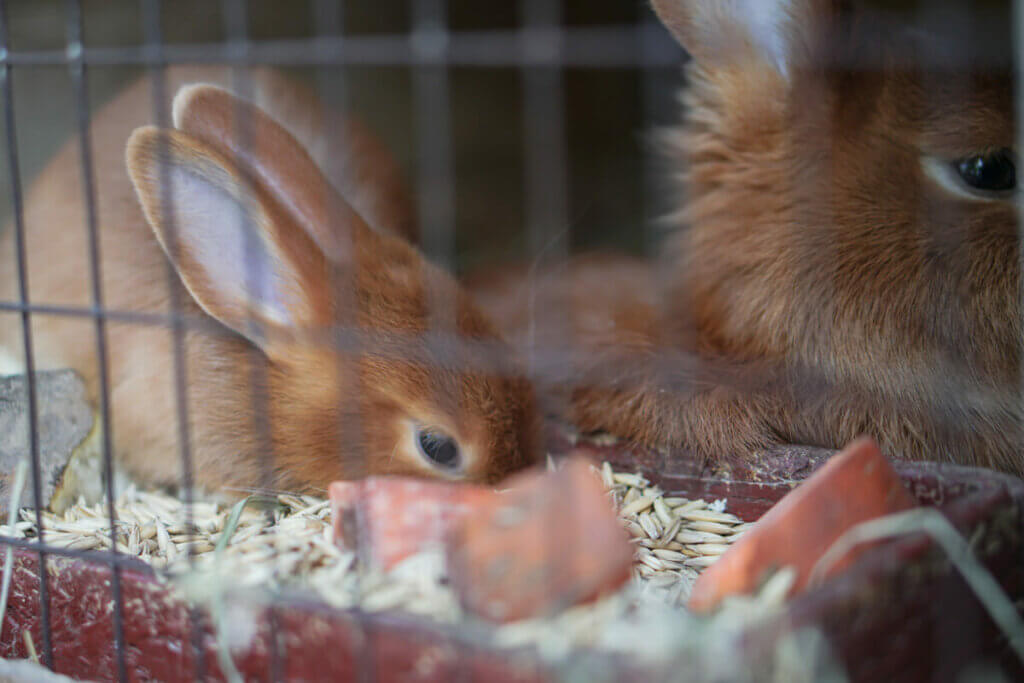
Feeding Rabbits
In order to make raising rabbits a profitable market, you may not always be able to afford organic rabbit feed.
Jeremy’s go-to for maximum growth is a commercial feed that’s made locally to him. It’s been well blended to give the rabbits their protein needs, enough roughage for fiber, and all the vitamins and minerals they need.
Jeremy also mentions that they free-feed their rabbits, keeping their bowl full morning and night, so the rabbits can eat as much as they want up until butchering day.
For their breeding stock, they only get about 1/4 cup of feed in the morning and 1/4 cup feed at night. This is more of a “maintenance” amount of feeding.
They also give them garden scraps, branches, leaves, the occasional carrot, etc.
If you’d like a more organic approach, you can check out the book “Beyond the Pellet”. However, Jeremy did mention that this method is a bit more difficult because it’s harder to ensure your rabbits are getting the appropriate ratio of protein, carbohydrates, nutrients, etc.
I haven’t read this book so I can’t give it my stamp of approval, but it is one other option for feeding.
For more information on feeding your animals and tips to keep costs down, check out Stocking Up on Animal Feed (+ How Much to Feed Animals).
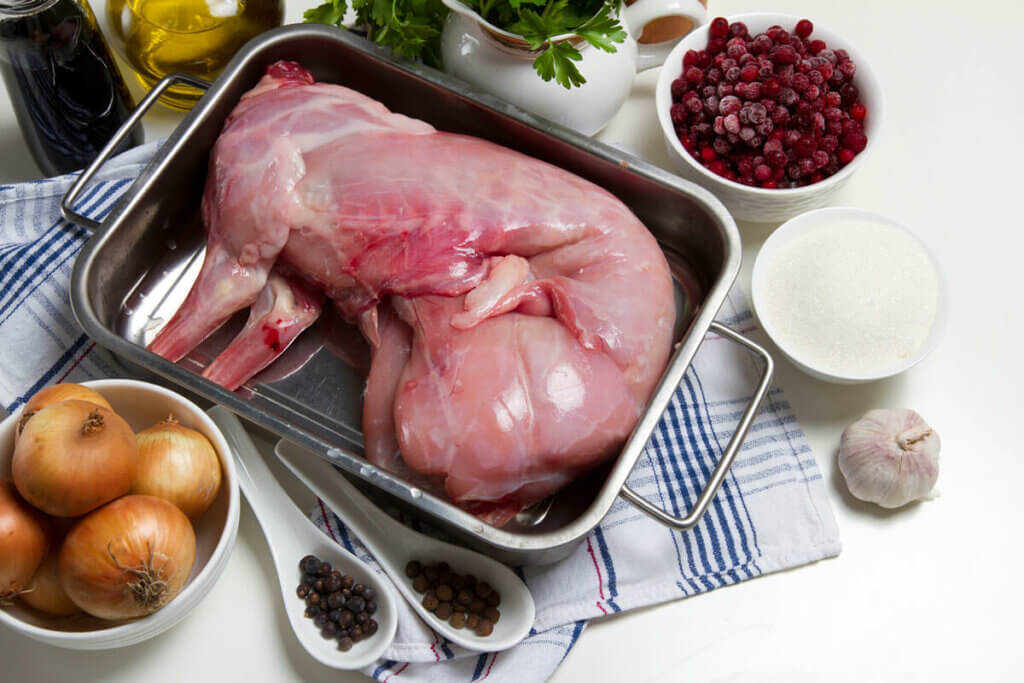
Other Rabbit Benefits
It’s always best if we can use as much of the rabbit and rabbit by-products as possible. Here are a few benefits that come with raising rabbits for meat.
Manure
Because rabbit droppings are not considered “hot”, they can actually be used directly in the garden straight from the hutch or cage.
This is fantastic news for gardeners who are used to having to age their manure before using it in the garden.
Pelts
Pelts are one of those things that have a market that’s either hot or cold. Oftentimes, for Jeremy, they end up in the compost because the pelt is of poor quality. Since the rabbits are so young, their skin is very thin so it doesn’t hold up to being tanned well.
If you’re wanting to raise rabbits for their pelts you’d be raising them to about 20 weeks (not 12). You’d also only harvest those pelts in deep winter or deep summer when they’re not in a molt.
Ears
There are entire markets out there that are taking rabbit ears and strips of rabbit pelts, twisting them, and drying them (or smoking/curing) to make treats for farm dogs.
Feet
The feet and tails can be processed to use for keychains. The tails have also been popular as tassels hanging off of purses or jackets as well.
Liver, Kidney & Other Organs
Rabbits have one of the largest liver-to-body size ratios and make a delicious pate. You can also hold out the kidney and other organs to feed your pets.
There is a very large market out there for whole-food, natural dog treats.
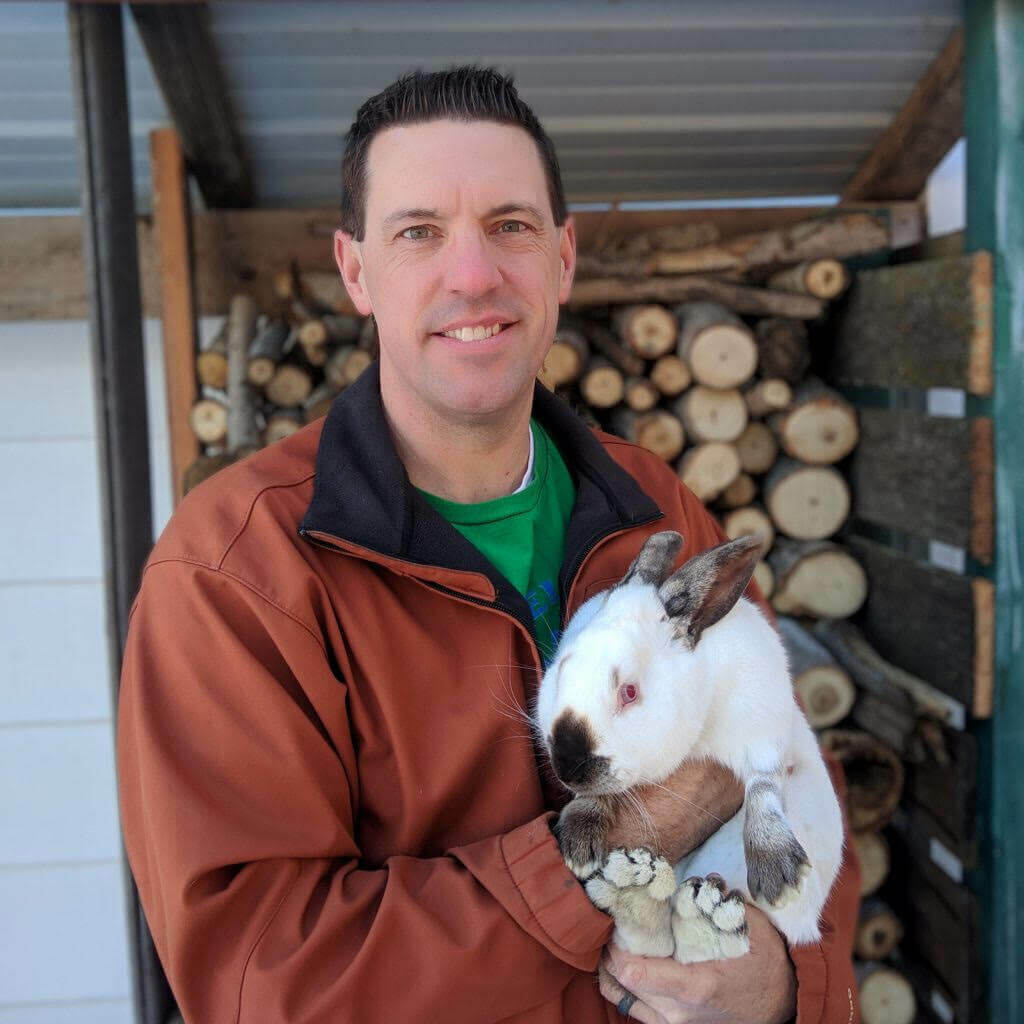
Where to Find Jeremy
I’m very excited because Jeremy will be at the 2021 Homesteaders of America Conference in Virginia where he’ll be demonstrating how to process rabbits and I can’t wait to see it.
If you can’t make it to an HOA Conference, you can catch Jeremy on his YouTube channel or on Facebook. And be sure to check out his specific playlist on Cuniculture, which is all about raising and breeding rabbits.
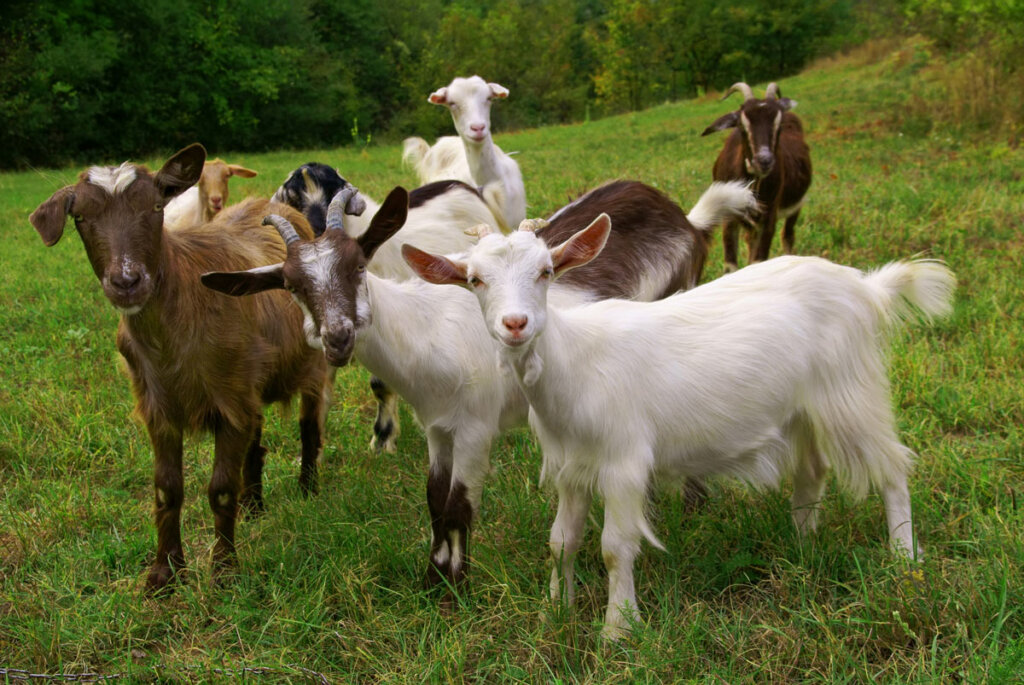
[fusebox_transcript]
Related Articles You May Enjoy
- Planning Your Livestock for a Year’s Worth of Meat (Per Person)
- Raising Backyard Meat Chickens
- 10 Tips on Raising Chickens for Meat
- Raising Meat Chickens for Profit
- Decoding mRNA in Meat
- How to Raise, Butcher & Cure Pigs for Best Flavor Without a Fridge
- Raising American Guinea Hogs
- American Guinea Hogs – Were They Worth It?
- 12 Tips on How to Raise Pigs for Meat
- A Guide to Raising Goats
- Raising Sheep for Fiber & Naturally Dyeing Wool
- Creating a Homestead Business that Makes Money
- Maximizing Your Homestead for Profit & Production (With Joel Salatin)
